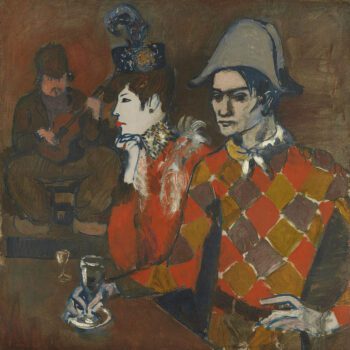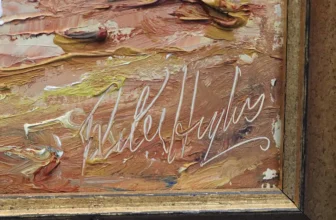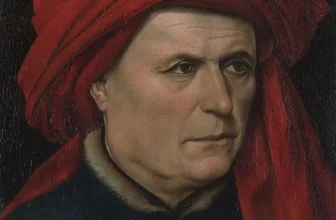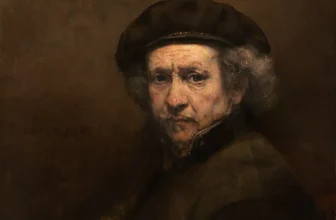Meaning of At the Lapin Agile painting by Pablo Picasso
In the bohemian heart of Montmartre, Paris, where music, wine, and art once mingled in candlelit cafés, a young Pablo Picasso sat and painted a world both whimsical and melancholic. It was 1905, and Picasso, still largely unknown to the wider public, was forging his identity during what art historians call his Rose Period. Among the works from this transformative era, one painting in particular captures the complex emotional texture of early 20th-century bohemian life: At the Lapin Agile.
This intriguing and slightly eerie masterpiece offers a portrait not just of individuals, but of artistic isolation, social masks, and the moody ambiance of a time when artists lived on the brink of poverty and genius. Let us enter that dimly lit cabaret, understand the story behind the figures, and explore the many layers of At the Lapin Agile, an artwork that foreshadowed the evolution of one of the greatest artists in modern history.
What is At the Lapin Agile?
At the Lapin Agile (1905), sometimes translated as In the Lapin Agile, is a painting by Pablo Picasso measuring approximately 39 inches by 38.5 inches. The title refers to a popular Parisian cabaret, “Le Lapin Agile” (The Nimble Rabbit), located in Montmartre. The name itself was a pun, derived from an earlier sign painted by André Gill showing a rabbit leaping out of a saucepan (lapin à Gill). The cabaret was a haunt for poets, musicians, and artists, a place of music, laughter, and introspection.
Picasso’s painting, now housed in The Metropolitan Museum of Art in New York, transports us to a dusky corner of this cabaret. Yet the mood here is not celebratory; it is hauntingly quiet, almost as if time has stopped. Three figures sit at a table: a young, wistful harlequin (widely accepted as a self-portrait of Picasso), a red-haired woman dressed in pink, and the slightly faded figure of a man playing the guitar in the background.
Who Painted At the Lapin Agile, and When?
The artist behind this enigmatic piece, Pablo Picasso, was born in Málaga, Spain in 1881. By the time he painted At the Lapin Agile, he was in his early twenties and living in Paris. This period in Picasso’s life was filled with economic struggle, artistic exploration, and personal reflection.
At the Lapin Agile was completed in 1905 during what is known as Picasso’s Rose Period, a time characterized by warmer hues, softer lines, and more tender subjects compared to the melancholy blue tones of his earlier Blue Period. This was a period of artistic transition for Picasso, where he began to introduce circus performers, harlequins, and café scenes into his work, figures that represented both the magic and isolation of artistic life.
The painting was commissioned by Frédéric Gérard, the owner of Le Lapin Agile. Picasso, who frequented the venue, was familiar with its ambiance and clientele. Gérard hung the painting in the cabaret as a kind of visual identity or calling card for the place. It remained there for years until it eventually entered private collections and, later, museum holdings.
What Is Happening in At the Lapin Agile?
At first glance, the painting appears to depict a simple moment in a café, a man and woman seated at a table, a guitarist in the background. But on closer inspection, the stillness becomes uncanny. The central harlequin figure sits straight-faced, shoulders slightly slumped, gazing into the void. The red-haired woman beside him stares blankly ahead, her hands folded delicately, almost anxiously, on the table.
There’s almost no interaction between the figures. No eye contact, no movement. It’s as if each person is lost in their own inner world, despite their physical proximity. This silent psychological distance between characters is essential to understanding the painting’s emotional power.
The harlequin, in particular, is loaded with symbolic weight. Picasso often used harlequins as stand-ins for himself, presenting the artist as a kind of emotional outcast, one who performs for others but is never truly seen. Here, he sits dressed in his traditional diamond-patterned costume, but it’s muted in color and meaning. He is not performing; he is waiting, perhaps even brooding.
Symbolism and Deeper Meaning
1. The Harlequin as Artist
The harlequin in this painting is a symbolic alter ego for Picasso himself. Harlequins, traditionally comic figures in Italian commedia dell’arte, are performers who wear masks and entertain the crowd. But Picasso’s harlequin is not performing. Instead, he represents the tragic figure of the artist, misunderstood, introspective, and melancholic.
He is dressed for a role, yet disengaged. This suggests a deeper commentary on Picasso’s own feelings of alienation in a city full of people, in a world that demands masks.
2. The Red-Haired Woman
The red-haired woman is widely believed to be Germaine Gargallo, a popular figure in the Montmartre art scene and the former lover of Picasso’s friend, the artist Carlos Casagemas. Casagemas had died by suicide in 1901, an event that plunged Picasso into the Blue Period. Including Germaine here might be Picasso’s way of confronting that past trauma. Her expression is unreadable, blank yet heavy with unspoken emotion.
She might symbolize romantic detachment, guilt, or simply the shared loneliness of those who frequent such venues. Her red hair and pink dress offer a visual counterpoint to the darkness surrounding her, yet her demeanor is far from joyful.
3. The Guitarist
In the background, a ghostlike man plays a guitar, perhaps providing the cabaret’s music, or perhaps existing only as a shadow of memory. His form is less defined, almost dissolving into the canvas. He could be seen as representing the atmosphere of Montmartre itself: ephemeral, musical, and fading.
He also serves as a compositional balance to the two figures at the table, completing the triangle of melancholy. His presence emphasizes the scene’s theatricality, but also its emptiness.
4. The Café as Stage
The Lapin Agile is not just a setting, it is a stage. The painting suggests that the cabaret is a space of performance, where people come not just to be entertained, but to play roles. Each character in the painting seems to be in costume, even if they are not on stage. This underlines the theme of emotional masks and hidden identities.
Style and Technique
At the Lapin Agile is painted in oil on canvas and exemplifies Picasso’s stylistic transition between his Blue and Rose Periods. While it lacks the stark coldness of the Blue Period, it also doesn’t fully embrace the warmth and romanticism of the Rose Period. The color palette leans toward earthy browns, muted pinks, and soft oranges, with subtle light that suggests the flicker of oil lamps or the dim glow of cabaret lighting.
The brushwork is smooth but expressive. Picasso does not over-detail the faces or surroundings, instead opting for simplified, nearly mask-like features. This abstraction enhances the psychological tension, viewers are invited to project meaning onto the characters’ expressions.
There is a clear influence of French post-impressionism, especially in the use of color and light, but Picasso’s composition reveals a developing modernist sensibility. He begins to compress space, flatten perspective, and abstract emotion in a way that hints at the Cubism that would soon emerge.
What Kind of Art Is At the Lapin Agile?
This painting falls within the Symbolist and Post-Impressionist traditions, though it also bears the mark of early Modernism. It’s part of Picasso’s Rose Period, which is known for its warmth, circus themes, and psychological depth.
Unlike pure realism, At the Lapin Agile is not interested in objective representation. It is, instead, an emotional portrait. The figures are symbolic, the setting is theatrical, and the mood is introspective. In this way, the painting is both personal and allegorical.
Cultural and Historical Context
Montmartre in the early 1900s was a breeding ground for avant-garde thought. Artists like Modigliani, Toulouse-Lautrec, and Utrillo mingled with poets and philosophers in dim cafés and smoke-filled studios. Poverty was rampant, but so was creativity. Picasso, as a Spanish immigrant, was a fringe figure among these bohemians.
His depiction of the Lapin Agile captures the cultural energy of the time but through a deeply personal and melancholic lens. This was not a place of glory or success, but of survival, of inner torment masked by outer routine. In this painting, Picasso documents a fading moment in Parisian culture, one of authenticity before fame, of shadows before light.
Where Is At the Lapin Agile Painting Today?
At the Lapin Agile is currently housed in the Metropolitan Museum of Art in New York City. It was donated to the museum by Mr. and Mrs. John Hay Whitney in 1963, and it remains one of the highlights of their modern art collection.
The painting is regularly on display in the museum’s galleries devoted to early 20th-century European art, where it serves as a crucial piece in understanding Picasso’s evolution from classical painter to cubist pioneer.
Why At the Lapin Agile Still Matters
More than a century after its creation, At the Lapin Agile continues to captivate viewers with its quiet intensity and layered meaning. It is not just a painting of people in a bar; it is a meditation on identity, loss, performance, and the emotional solitude of the artist.
The harlequin’s blank stare becomes a mirror in which we see our own emotional masks. The red-haired woman’s silence becomes a metaphor for disconnection in a world that prizes entertainment. And the cabaret setting becomes a stand-in for all spaces where people pretend to be more alive than they feel.
This is what makes At the Lapin Agile not just a great painting, but a timeless one. In the quiet sadness of its figures, we find echoes of our own longings and the universality of the human condition. In that small corner of Montmartre, lit by the flicker of invisible candles, Picasso painted a moment, and a truth, that will never fully fade.




